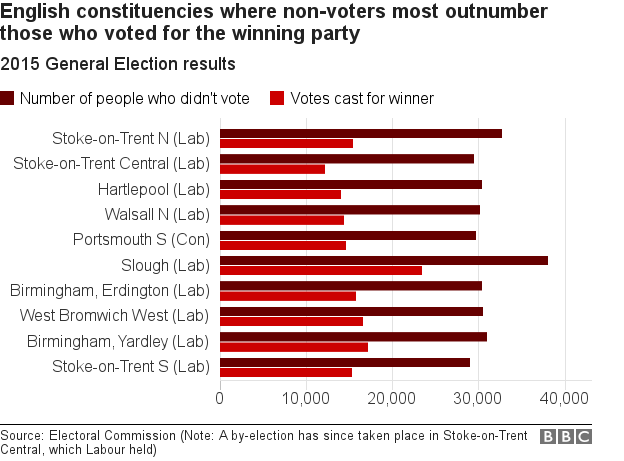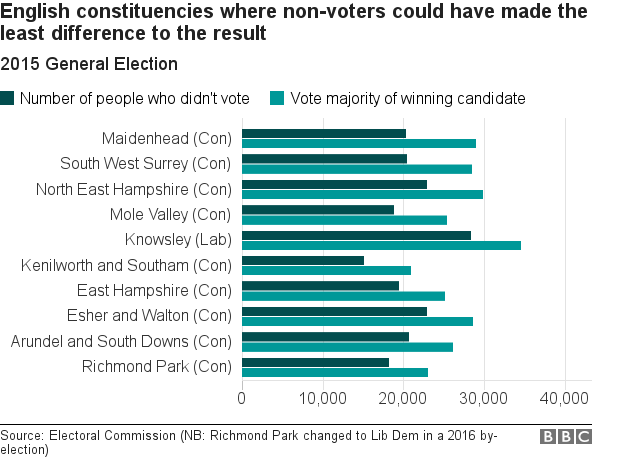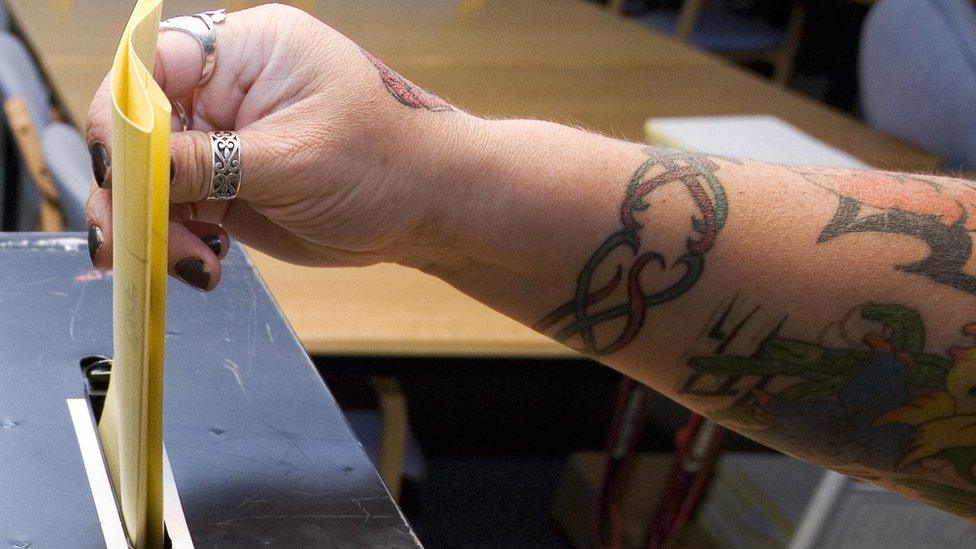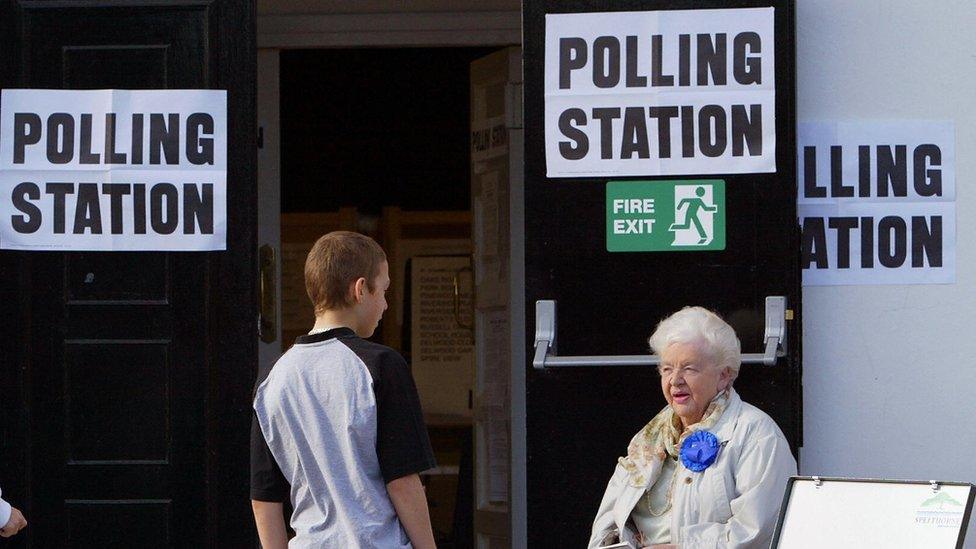How non-voters can change the outcome of an election
- Published
- comments
The people too 'disillusioned' to vote in election
Non-voters would play a pivotal role in the general election if they were to use their vote, analysis suggests.
The number of non-voters exceeded the number of votes cast for the winning party in more than half of UK constituencies in 2015.
The West Midlands dominates the top end of English constituencies where non-voters most outnumbered winning parties.
Northern Ireland had the most untapped potential from non-voters in the UK.
The Electoral Reform Society said many people feel their vote does not count.
Sorry, your browser cannot display this content.
The BBC England Data Unit analysed the 2015 general election and found:
Had all those unused or spoiled ballots translated into a vote for a party called None Of The Above, it would have won 340 out of the UK Parliament's 650 seats, because the number of non-voters in those areas was greater than the number cast for the winning party
That is 10 more seats than the Conservatives actually won in 2015
Had all the non-voters supported the second placed candidate, it would have changed the outcome in 602 constituencies

Three seats in Stoke-on-Trent, two in Birmingham, West Bromwich West and Walsall North all returned Labour MPs, yet between 13,000 and 17,000 more people failed to cast a valid vote than voted for the winner.
In some cases, the winning majority was small. In Walsall North, for example, Labour won in 2015 by less than 2,000 votes. Yet more than 30,000 eligible voters did not choose a candidate.
In the UK overall, Northern Ireland contained constituencies where the untapped potential of non-voters was even higher. In South Antrim, 18,960 more people did not vote than voted for the winning Ulster Unionist Party MP. East Londonderry and Upper Bann, won by the Democratic Unionist Party, also had about 17,500 more non-voters and spoiled papers each than votes for the winning MP.
Only in 48 constituencies would the number of non-voters and spoiled papers added to the second-placed candidate not have been enough to change the result.
The seat safest from the untapped power of non-voters in 2015 was that of Theresa May, who went on to become prime minister in July 2016.

See the figures for your constituency on this interactive map, external.
Katie Ghose, the chief executive of the Electoral Reform Society, wants to see an end to the traditional "first past the post" voting system.
She said: "Despite our flawed voting system, it's vital that everyone gets out there and uses their hard-fought right to vote. Voting does make a difference, and wherever people are they should have their say. The point is to make the voice of voters even stronger.
"Nonetheless, we know that many people stay at home because they don't feel like their vote would count.
"And of course, millions voted for smaller parties where their votes simply didn't translate into representation. That has a huge impact on public faith in our democracy, and does Parliament and politics a huge disservice."
The first past the post system is seen by its supporters as simple, because the person with the most votes wins.
Former Prime Minister David Cameron, who campaigned against changing the voting system in 2011, described it as "cheap to administer and with little bureaucracy".
Simon Woolley, a director of campaign group Operation Black Vote, said: "A vote is more than just a choice. It's leverage. It's demanding the change you want to see. You cannot tell me that voting does not make a difference."
- Published2 June 2017

- Published19 April 2017
